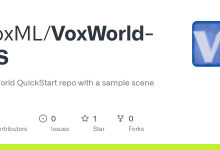Thune: A Forth-Inspired Language Using a Datatype and Context System Derived from Orca
Thune is a programming language that emerged in 2014, inspired by the minimalist and stack-based approach of the Forth language, while incorporating a datatype and context system derived from the Orca language. This fusion of concepts provides Thune with unique capabilities, focusing on high-level abstractions and modular design for software development. Although the language is not widely known or used, it introduces fascinating possibilities for developers interested in novel programming paradigms.
The Origins and Conceptual Foundation of Thune
Thune’s development draws on the core principles of Forth, a language well-regarded for its simplicity and low-level control over hardware, which allows programmers to manipulate a machine’s memory and stack directly. While Forth is often associated with embedded systems and resource-constrained environments, Thune aims to combine these low-level features with high-level abstractions to provide a flexible and powerful language that can scale in complexity.
Orca, the second primary influence on Thune, is a dataflow programming language known for its distinctive approach to handling context and state. Orca allows developers to define computations in terms of data flows rather than explicit instructions, making it easier to reason about and manipulate states in complex systems. Thune takes this approach and applies it to the structure of its language, creating an environment where context management plays a central role in the flow of computations.
Key Features of Thune
Thune is designed with several unique features in mind, particularly its emphasis on context-driven development and datatype manipulation. These features set Thune apart from more traditional languages, making it particularly appealing to developers looking for something innovative.
1. Stack-based Execution Model
At its core, Thune retains the stack-based nature of Forth. This model encourages programmers to think in terms of operations on the stack, which can be particularly powerful when dealing with low-level computation or optimizing performance. Unlike many modern languages that abstract away memory management, Thune gives the programmer control over the stack, allowing them to write highly optimized code.
2. Datatype and Context System
One of the most distinctive aspects of Thune is its use of a datatype and context system derived from Orca. In Thune, computations are tied to a context, and this context is responsible for managing the state of variables and operations throughout the program. The context can be thought of as an environment that encapsulates the state of the computation, allowing for more dynamic and flexible programming. This system makes it possible to write more complex, state-sensitive operations that are context-dependent.
3. Modular Design
Thune encourages modularity through its datatype and context system. Just as Orca allows for dynamic modification of computation flows, Thune allows developers to design their programs in a modular fashion. This is achieved through the use of “modules,” which represent isolated pieces of code that can be independently developed, tested, and modified. By organizing code into modules, Thune aims to improve both maintainability and reusability, critical aspects of modern software development.
4. Minimalist Syntax
True to its Forth heritage, Thune maintains a minimalist syntax, designed to reduce complexity and increase efficiency. There are fewer rules to remember, and the syntax is optimized for writing compact, efficient code. This makes Thune a good fit for developers who prefer concise, no-frills programming and are comfortable with the intricacies of low-level systems programming.
5. Open Source and Community Development
Though the language itself is relatively niche, Thune is an open-source project, hosted on SourceForge. This allows the community to contribute to its development and share ideas about how the language can evolve. Despite the lack of a large user base, the open-source nature of Thune means that anyone interested in exploring or enhancing the language can do so freely.
Applications of Thune
The primary use cases for Thune are in environments where low-level control and modularity are important, but high-level abstractions and a sophisticated context system are also needed. Thune may be well-suited for:
- Embedded Systems: The stack-based nature of the language and its efficiency make it a good candidate for embedded systems programming, where resource constraints are a significant concern.
- Dataflow Programming: Thune’s context system, derived from Orca, positions it as a potential tool for building dataflow-based systems, which are becoming increasingly popular in domains like real-time analytics and AI.
- Educational Tools: Given its simplicity and emphasis on understanding fundamental programming concepts, Thune could be an excellent tool for teaching computer science students about stack-based languages, context management, and modular design principles.
Conclusion
Thune is an intriguing programming language that offers a unique blend of Forth’s stack-based execution and Orca’s powerful datatype and context system. Although it is not widely used in mainstream software development, Thune provides a compelling option for those interested in low-level programming, modular design, and dataflow-based systems. Its open-source nature also allows for ongoing development and experimentation, potentially making it a useful tool for developers in specific niches.
As the field of programming languages continues to evolve, Thune represents an interesting fusion of old and new ideas, offering a fresh perspective on how software can be structured and executed. For developers with a passion for exploring novel paradigms, Thune may provide a valuable opportunity to engage with a language that combines the best of both worlds—low-level control and high-level abstractions.




